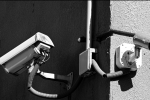May 20, 2015
Screens In Worship
 When I wrote a post about the old battle between using service bulletins or The Book of Common Prayer, I knew I’d get feedback, pushback, and a whole lot of unabashed opinions. My predictions were spot on, but the responses I got were also toned down, at least a bit, primarily because the point I was making was that there’s a middle way, something of a happy complimentary relationship between the two.
When I wrote a post about the old battle between using service bulletins or The Book of Common Prayer, I knew I’d get feedback, pushback, and a whole lot of unabashed opinions. My predictions were spot on, but the responses I got were also toned down, at least a bit, primarily because the point I was making was that there’s a middle way, something of a happy complimentary relationship between the two.
Up front, let me say that, in general, I think the best answer to most questions and issues we deal with as the church is both/and. And I think that that’s not just a compromise position but it’s an honest and integrated theological position, expressed in the comprehensiveness that is at the heart of Anglicanism.
Thus, having said all of that (see how it took more than 100 words to get there!) I want to make a case for video/visual screens in worship. I’m not going to really argue the point, and this is only a cursory case, at best. I’m talking about flat-screen TVs or projector screens, installed professionally and as part of an entire audio-visual overhaul of the parish hall and/or church space. At the very least it would be worthwhile to do a serious investigation of how screens might enhance or compliment our worship experience, then considering a congregation-wide conversation.
Now let the pushback and vitriol begin.
There are many advantages to screens in the worship space and setting. If you use screens to project prayers or songs, the people in worship will be looking up and be all the more engaged, together, in the act of corporate worship. Screens are a great way to push out announcements and advertisements for upcoming events. Some congregations might use screens for songs and prayers at a more contemporary service and for a slideshow of announcements before the service begins in a more traditional service. Screens can also eliminate the need for lengthy service bulletins that are time-consuming for the parish administrator.
There are many disadvantages, too, not the least of which is the amount of pushback one will get when begins to talk about it. I’ll be honest: the congregation I serve does not yet, nor will we soon, get screens in worship; it’s going to take a long, intentional, and prayer-soaked process. I know of three congregations (out of 89) in the Diocese of Washington who have installed or are in the process of installing screens, exclusive of the Washington National Cathedral that has long had screens in their space. This is a trend, and it’s important to recognize that. It’s not a trend all churches will or should feel called to adopt, but it is one that all churches should consider. Further, it’s not just a cultural, secular trend – capable of being dismissed as ‘trendy’ – because, if used well, screens can greatly benefit the church and enrich the People of God. At St. George’s, Valley Lee we are going to be talking about them and we are taking a look at some various options, all of which is a part of a more comprehensive, professional audio-visual-tech overhaul of our spaces.
And so let me close with at least one more thing that screens ‘do,’ in a sense. Installing and using screens gives a nod, a very serious gesture, to the vast majority of people who use screens as their primary access point to conversations and news-gathering. It communicates in a very significant symbolic way that the church is deeply interested in finding new ways to express what is at our heart a lively, beautiful, and ancient faith. As ironic as it may sound, if screens are installed well and discreetly and used professionally and sensitively, screens, especially screens in worship can give a new and winsome expression to what it means to be traditional. Traditional, that is, in the very best sense.
Don't miss a blog post! Subscribe via email or RSS, using the grey box on the upper right.





